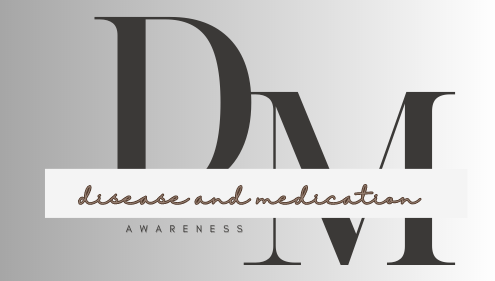What exactly do you mean by chronic disease?
A chronic disease is a long-term health condition that typically lasts for an extended period, often for years or even a lifetime. These conditions usually progress slowly and may have periods of remission and exacerbation. Chronic diseases can range from mild to severe and can affect various parts of the body, including organs, tissues, and systems. Examples of chronic diseases include diabetes , heart disease, asthma, arthritis, and certain types of cancer. Managing chronic diseases often requires ongoing medical care, lifestyle changes, and sometimes medication to control symptoms and prevent complications.
Types of Chronic Diseases
Chronic diseases can affect virtually any part of the body and encompass a wide range of conditions. Some common types include:
- Cardiovascular Disease, such as coronary artery disease, hypertension, and heart failure.
- Respiratory Disease, such as chronic obstructive pulmonary disease (COPD) and asthma,.
- Metabolic diseases include diabetes mellitus and metabolic syndrome.
- Neurological conditions: similar to Alzheimer’s complaints, Parkinson’s complaints, and multiple sclerosis.
- Musculoskeletal Disorders, including osteoarthritis and rheumatoid arthritis,.
- Cancer Disease: Many forms of cancer are considered chronic diseases due to their long-term nature and the need for ongoing treatment and management.
Common Chronic diseases:
Here are some common chronic diseases:
- Coronary artery disease
- Hypertension(High-blood-pressure)
- Heart failure
- Chronic obstructive pulmonary disease (COPD)
- Asthma
- Diabetes
- Metabolic syndrome
- Alzheimer’s disease
- Parkinson’s disease
- Multiple sclerosis
- Osteoarthritis
- Rheumatoid arthritis
- Various types, such as lung cancer, breast cancer, prostate cancer, etc.
Comorbidity from Chronic disease

Comorbidity refers to the presence of two or more chronic diseases or conditions in the same individual. When someone has multiple chronic conditions, managing their health becomes more complex, as each condition may interact with or exacerbate the others. How comorbidity can arise from chronic diseases:
- Shared Risk Factors: Many chronic diseases share common risk factors. For example, obesity, physical inactivity, and a poor diet are risk factors for conditions like diabetes , cardiovascular disease, and certain cancers. Thus, individuals who have one chronic disease may be more likely to develop others due to shared underlying causes.
- Disease Progression: Some chronic diseases can predispose individuals to developing additional health problems over time. For instance, uncontrolled diabetes can lead to complications such as cardiovascular disease, kidney disease, and neuropathy. Similarly, individuals with COPD are at higher risk for heart disease and osteoporosis.
- Treatment Side Effects: Medications used to manage one chronic condition may have side effects or interactions that increase the risk of developing other health problems. For example, certain medications used to treat hypertension(high-blood-pressure) can contribute to the development of diabetes or kidney disease.
Management and Prevention
While many chronic diseases cannot be cured, they can often be managed effectively through:
- Medications: To control symptoms, manage complications, and slow disease progression.
- Lifestyle modifications, such as adopting a healthy diet, engaging in regular physical activity, quitting smoking, and managing stress,.
- Regular medical monitoring includes check-ups, screenings, and tests to monitor disease progression and detect complications early.
- Patient education and support: providing information, resources, and support services to help individuals better understand their condition, adhere to treatment plans, and make informed decisions about their health.

Who is often affected by chronic disease?
Chronic diseases can affect people of all ages, genders, and socioeconomic backgrounds, but certain groups may be more vulnerable due to various factors. Here’s a breakdown of who is often affected by chronic diseases:
- Elderly Individuals: Chronic diseases are more prevalent among older adults due to the cumulative effects of aging, longer exposure to risk factors, and age-related changes in physiology. Conditions such as cardiovascular disease, arthritis, diabetes , and dementia are common among the older people,population.
- Minority and Ethnic Groups: Racial and ethnic minorities may face higher rates of chronic diseases due to various factors, including socioeconomic disparities, cultural factors, and unequal access to healthcare services. For example, African Americans have higher rates of hypertension(high-blood-pressure) diabetes, and certain cancers compared to other racial groups.
- Individuals with Unhealthy Lifestyles: Certain lifestyle factors, such as poor diet, physical inactivity, smoking, and excessive alcohol consumption, increase the risk of developing chronic diseases. Individuals who engage in these behaviors are more likely to experience conditions such as obesity, cardiovascular disease, diabetes, and respiratory disorders.
- Genetically Predisposed Individuals: Genetic factors can predispose some individuals to certain chronic diseases. For example, a family history of diabetes , heart disease, or cancer can increase an individual’s risk of developing these conditions.
- Individuals with mental health disorders : There is a strong association between mental health disorders such as depression, anxiety, and schizophrenia and the development of chronic diseases. These individuals may have higher rates of smoking, substance abuse, poor diet, and lack of physical activity, which contribute to the onset and progression of chronic conditions.
- Occupational Exposures: Certain occupations expose individuals to environmental hazards, toxins, and stressors that increase the risk of chronic diseases. For example, workers in industries such as mining, agriculture, construction, and healthcare may face higher rates of respiratory disease, musculoskeletal disorders, and mental health conditions.
Overall, addressing chronic diseases requires a comprehensive approach that involves healthcare providers, public health initiatives, community support, and individual empowerment. By promoting prevention, early detection, and effective management strategies, the burden of chronic diseases can be reduced, and the quality of life for those affected can be improved.
